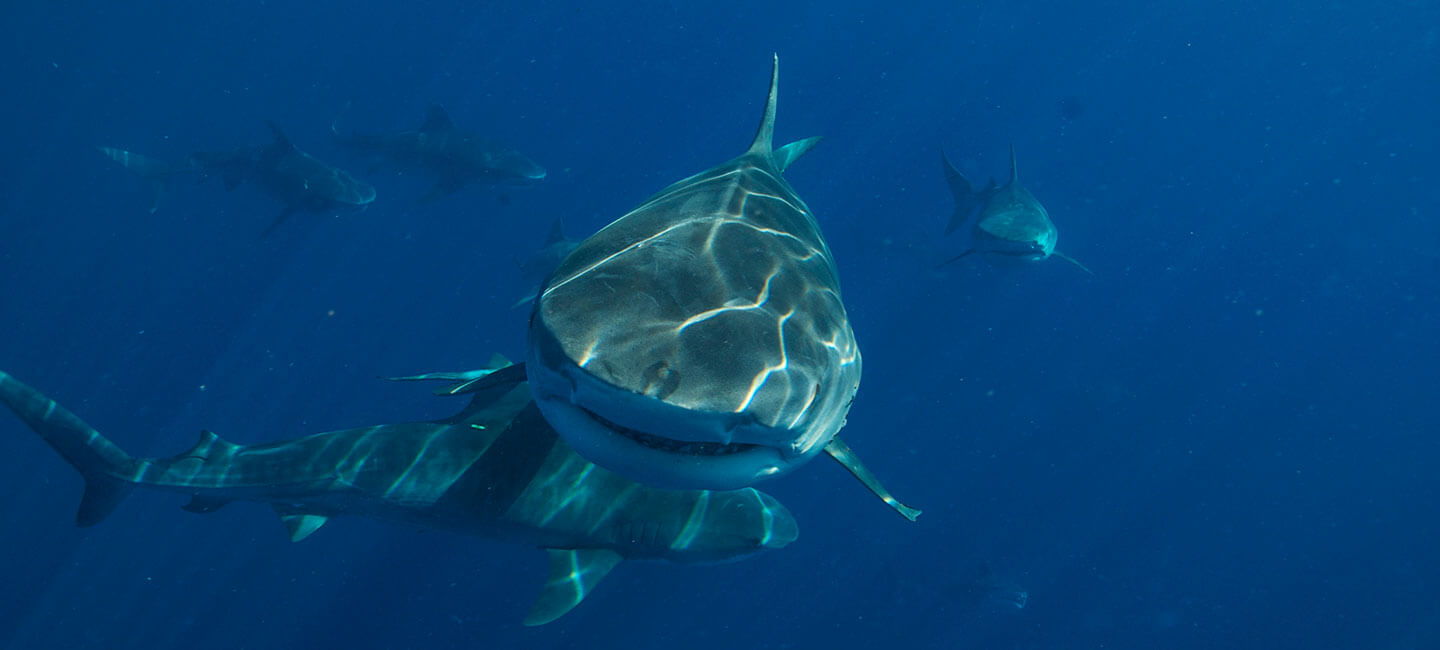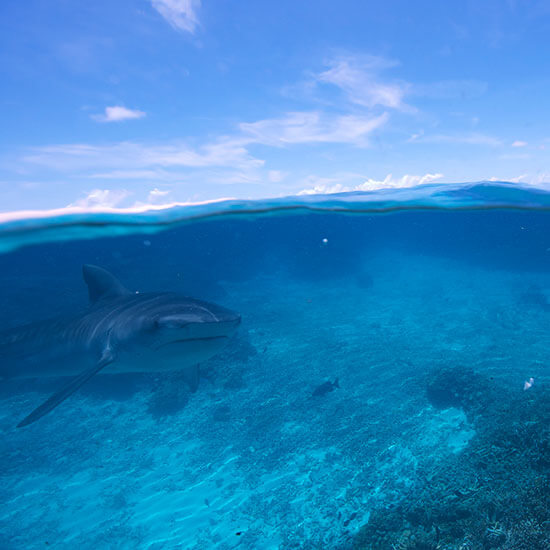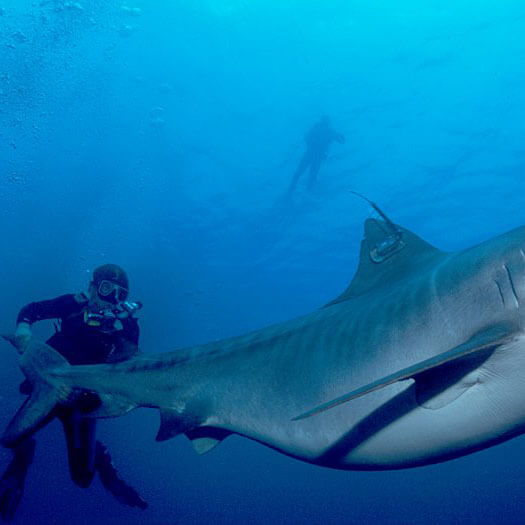When he’s not busy living out at sea and working with some of the world’s deadliest sea creatures, Richard is a marine biology research fellow at James Cook University and an Emmy-award-winning cinematographer. He may be risking his life in the process, but the research done by Richard and the team at Biopixel informs conservation strategies that help to protect and conserve the Great Barrier Reef. From measuring the metabolic systems of sharks to projects that increase turtle nesting and hatchling success, Richard is out there on the Reef gaining knowledge through his work that is invaluable for conservation.


Tiger Shark Project

The issue
A big part of protecting our precious marine biodiversity is conserving migration patterns of marine animals like sharks, turtles and whales. One of these species is the magnificent tiger shark, Galeocerdo cuvier, an iconic species of the Great Barrier Reef and an important apex predator.
Threats to migration, and tiger sharks, include habitat loss/degradation, climate change, creation of barriers, over-fishing or over-exploitation, as well as lack of awareness and information about migration patterns and their importance. Further research is needed to understand what drives migration, location of key habitats, and identify the threats to migration.

Impact on the Reef
As apex predators, tiger sharks are essential to maintaining ecological balance in the ocean, and this filters right down to the corals which house their prey. Tiger sharks are the main species affected by the culling programs in Australia. Since 1993, between 175 and 400 tiger sharks are killed each year in the Queensland Shark Control Program. If we are going to develop new and effective methods for protecting people and sharks, we need to understand their movement behaviour and habitat use.
Action being taken
The project is currently expanding previous research at Raine Island, studying tiger sharks to include most of the Queensland coast from the Fraser Island in the south, up to the GBR Marine Park and the Torres Strait in the north. This newly expanded long-term project will continue to study tiger sharks using satellite and acoustic transmitters to find out more about their movement behaviour, habitat use and migration patterns. Expansion of the project has so far seen tiger sharks tagged with satellite and acoustic tags at Batt Reef off Cairns and Fraser Island.
- Gather data and build awareness of the importance of apex predators like the tiger shark for marine environments like the GBR
- Determine if tiger sharks migration/movement strategies are driven by diet and/or reproduction.
- Evaluate the effectiveness of conservation strategies for highly mobile species such as tiger sharks

The survival of the Reef is dependent on the billions of people on this planet. No matter where you live, anything and everything you do to reduce your carbon footprint will help. After all, the world's largest living structure was built by billions of the tiniest coral animals.

With enough support, this project will:
- Funds are needed to increase sample size and locations we work in - the Qld coast is long and we need to target other areas apart from Batt and Raine.
- With enough support we can study tiger sharks along the entire Queensland coast
- Develop material for school education – visit schools
Unite for the reef.
Together, we can ease the pressures that the reef faces - but we need your support to do it. Because it’s only when we’re united as Citizens, that our individual actions can come together to make a real, physical impact on the Great Barrier Reef.


